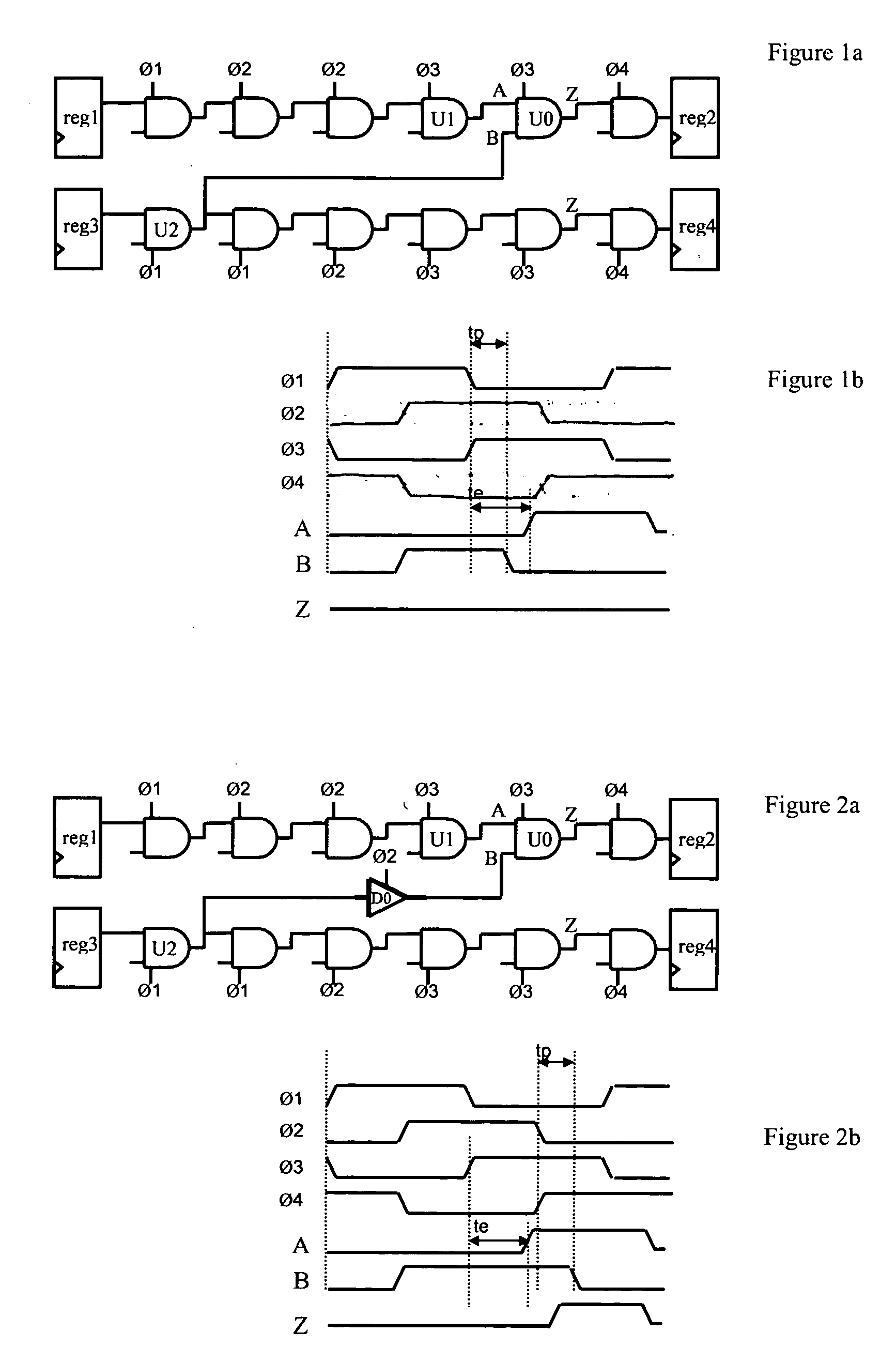Dynamic phase assignment optimization using skewed static buffers in place of dynamic buffers
- Summary
- Abstract
- Description
- Claims
- Application Information
AI Technical Summary
Benefits of technology
Problems solved by technology
Method used
Image
Examples
Embodiment Construction
[0020] The following is a description of an embodiment of the present invention for a four-phase clock scheme (phase 1 through phase 4). Although the clock signals are shown having a 50% duty cycle (i.e. each clock toggles every half period) and phase N being a copy of phase N−1 delayed by a quarter of a period, it will be apparent to those of ordinary skill in the art that the present invention can be used with more relaxed requirements regarding the phase alignment. All that is required are four skewed versions of an original clock, wherein the falling edge of phase 1 is aligned with the rising edge of phase 3, and the falling edge of phase 2 is aligned with the rising edge of phase 4 (plus or minus some controlled skew).
[0021] The present invention is used in the framework of an automated phase assignment (script), which initially assigns phases based on the worst-case data arrival time. The script assigns a cell to phase P as shown in equation [1]:
P=int((max_arrival_time−clock_...
PUM
 Login to View More
Login to View More Abstract
Description
Claims
Application Information
 Login to View More
Login to View More - R&D
- Intellectual Property
- Life Sciences
- Materials
- Tech Scout
- Unparalleled Data Quality
- Higher Quality Content
- 60% Fewer Hallucinations
Browse by: Latest US Patents, China's latest patents, Technical Efficacy Thesaurus, Application Domain, Technology Topic, Popular Technical Reports.
© 2025 PatSnap. All rights reserved.Legal|Privacy policy|Modern Slavery Act Transparency Statement|Sitemap|About US| Contact US: help@patsnap.com



